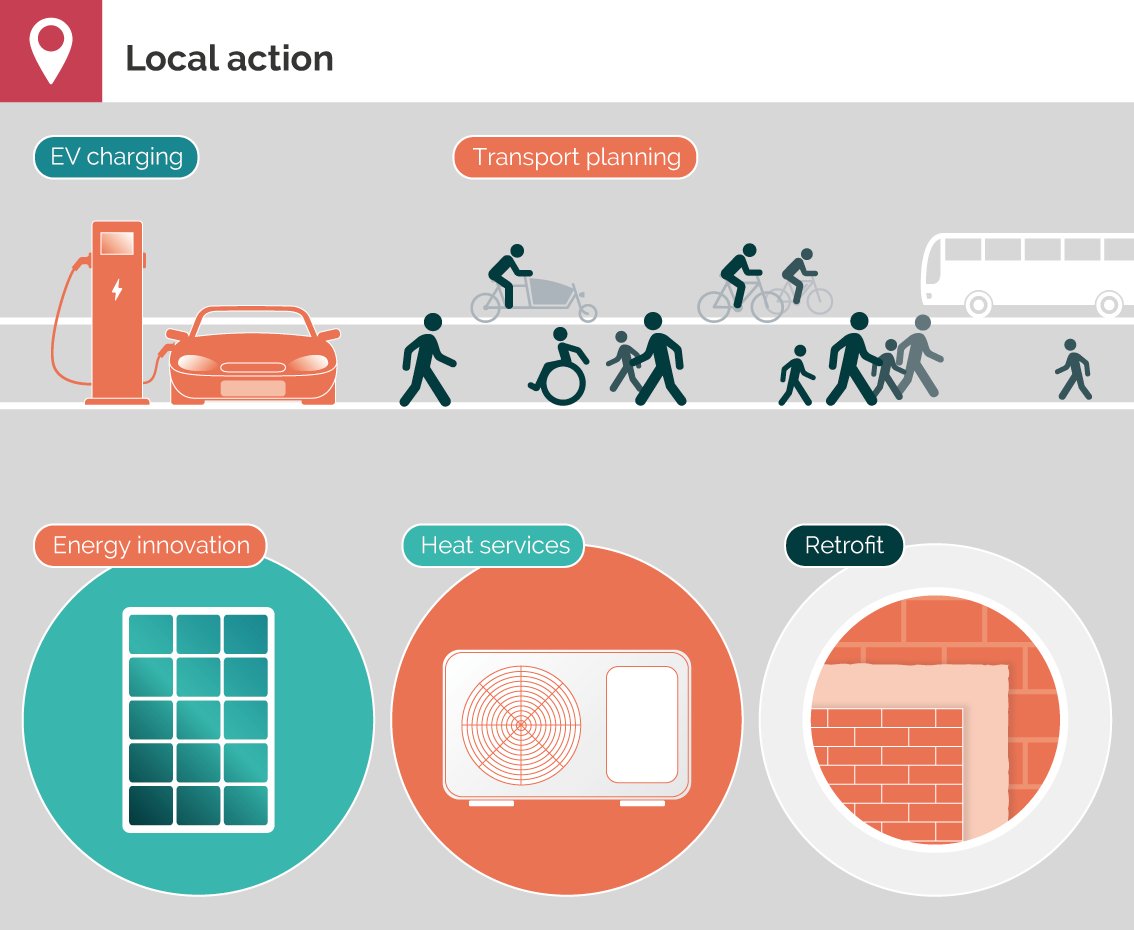
Sub-national institutions and actors, particularly local government, are potentially key actors in driving energy and climate action at local and regional levels.
The majority of local authorities have declared a climate emergency and set targets for their own operation and/or their Council area. In many cases, there is a genuine intention to do much more [1]. However, many targets are not supported by coherent plans.
Local authorities already have some relevant powers, notably in strategic planning, development control, public transport support, highways, social housing, building control and trading standards. In many cases, land use and transport plans are increasingly reflecting climate concerns. There is huge heterogeneity within and between local authority areas across the UK. Local authorities understanding of local public opinion and ‘what works’ locally make them essential actors in delivery of tailored solutions, for example in active travel infrastructure [2] and decarbonised heating [3].
Local government and other local/regional public bodies are leading local initiatives to provide retrofit projects [4], heat services [3], vehicle charging [5], transport planning [6], and energy innovation [7]. Some targeted national funds are being used, for example 19 of the 35 City Deals examined include climate mitigation measures, but they mostly build on existing initiatives or focus on individual projects, with a lack of joined-up approaches [8].
Policy changes and funding increases will be needed if local authorities are to contribute more systematically to net-zero carbon buildings. Ambition is frequently constrained by a lack of powers (e.g. to require low energy buildings), and/or capacity (e.g. to develop local area energy plans). Action is also limited by powers and expertise, especially outside large city authorities [9].
Many local authorities seek to combine decarbonization goals into broader ‘place-based’ ambitions, which also seek to improve local economies, address poverty and improve local environments. In some cases, these build explicitly on the idea ‘Local Green New Deals’ inspired by earlier public policy interventions [10]. There are initiatives which are partially successful, but for such ambitions to be widely realized, local government a much clearer remit. This will need to include greater powers and resources, as well as duties, especially with respect to housing improvement, public transport, active travel and nature recovery [11].
Evidence
- LGA guidance on actions for transport in the climate emergency | CREDS & LGA Briefing, 2020
- Less is more: Changing travel in a post-pandemic society | CREDS report, 2022
- Chapter 17: Local heat and energy efficiency policy: ambiguity and ambivalence in England and Scotland | Research paper, 2021
- Housing retrofit: six types of local authority energy service models | Research paper, 2021
- Decarbonising transport: Accelerating the uptake of electric vehicles | CREDS & LGA Briefing, 2020
- Decarbonising transport: The role of land use, localisation and accessibility | Research paper, 2020
- Pathways to a zero carbon Oxfordshire | Research paper, 2021
- Climate action, city regions and central government: a comparative analysis of the UK City Deals | CREDS report, 2021
- Governance institutions and prospects for local energy innovation: laggards and leaders among UK local authorities | Research paper, 2020
- The Green New Deal: Historical insights and local prospects in the United Kingdom (UK) | Research paper, 2023
- Local Green New Deals: A transformative plan for achieving the UK’s climate, social and economic goals locally | Report, 2023
Banner photo credit: Pat Whelen on Unsplash
